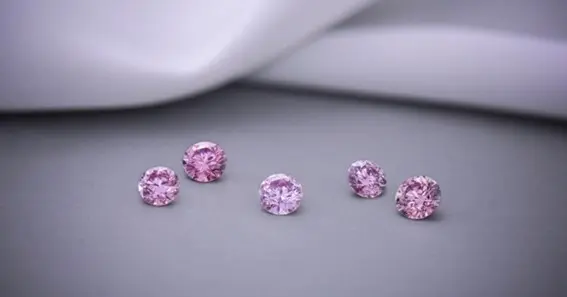Diamonds, renowned for their brilliance and durability, often contain natural imperfections known as inclusions and blemishes. These imperfections in a diamond significantly influence its clarity, appearance, and overall value.
Types of Diamond Imperfections
- Inclusions: Internal flaws within the diamond, such as:
- Crystals: Foreign mineral crystals trapped inside the diamond during its formation.
- Feathers: Internal cracks resembling feathers, which can affect durability.
- Clouds: Groups of tiny pinpoints that create a hazy area within the diamond.
- Needles: Long, thin inclusions that appear like tiny rods.
- Knots: Crystal inclusions that reach the diamond’s surface, potentially impacting polish.
- Blemishes: Surface imperfections, including:
- Scratches: Fine lines on the diamond’s surface.
- Nicks: Small chips or indentations on the surface.
- Pits: Tiny holes or depressions on the diamond’s surface.
- Polish Lines: Lines left on the surface during the polishing process.
Impact on Diamond Clarity and Value
The presence, size, number, and location of these imperfections determine a diamond’s clarity grade. The Gemological Institute of America (GIA) clarity scale ranges from Flawless (no inclusions or blemishes visible under 10x magnification) to Included (inclusions and/or blemishes visible to the naked eye). Higher clarity grades typically command higher prices, as they are rarer and more desirable.
Evaluating Diamond Imperfections
When assessing a diamond, consider:
- Size: Larger imperfections are more noticeable and can significantly impact clarity.
- Number: Multiple imperfections can collectively affect the diamond’s appearance.
- Location: Imperfections near the center (table) are more visible than those near the edges (girdle).
- Nature: Certain types of inclusions, like feathers, may pose durability concerns.
Managing Imperfections in Diamonds
While it’s challenging to find a completely flawless diamond, many imperfections are microscopic and do not affect the diamond’s beauty or durability. Selecting a diamond with inclusions that are not visible to the naked eye can offer better value without compromising appearance. Consulting with a certified gemologist can provide insights into how specific imperfections may influence a diamond’s performance and longevity.
FAQ
- Can diamond imperfections be removed?Some treatments, like laser drilling and fracture filling, can reduce the visibility of certain inclusions, but these processes may affect the diamond’s value and are typically disclosed.
- Do all diamonds have imperfections?Most natural diamonds have some form of imperfection; completely flawless diamonds are extremely rare and expensive.
- How do imperfections affect a diamond’s sparkle?Significant or strategically located inclusions can interfere with light reflection, diminishing a diamond’s brilliance.
- Are imperfections visible to the naked eye?It depends on the size, number, and location of the imperfections. Many inclusions are microscopic and not visible without magnification.
- Should I avoid diamonds with imperfections?Not necessarily. Diamonds with minor, non-visible imperfections can offer excellent value and beauty. It’s essential to balance clarity with other factors like cut, color, and carat weight.
Understanding imperfections in diamonds enables consumers to make informed decisions, balancing clarity with other quality factors to select a stone that aligns with their preferences and budget.










